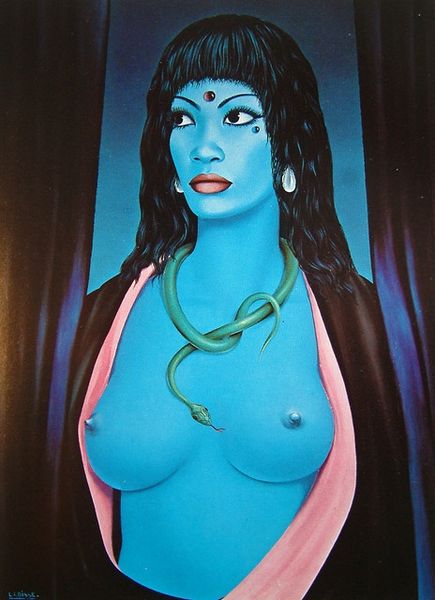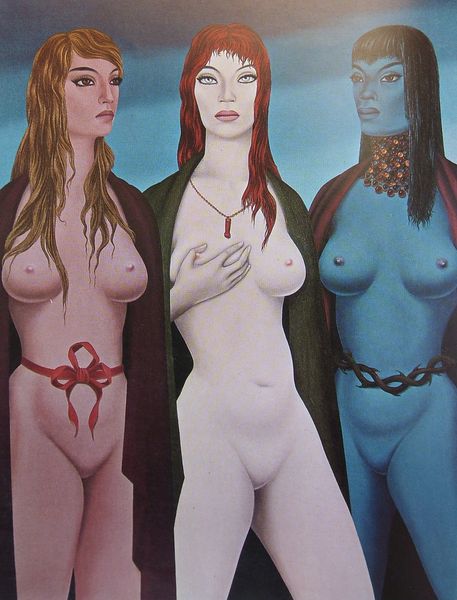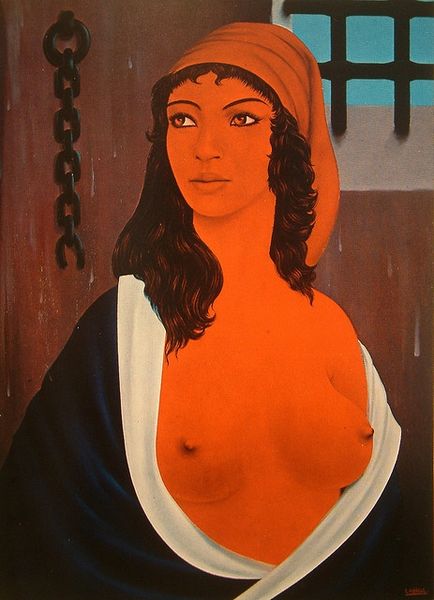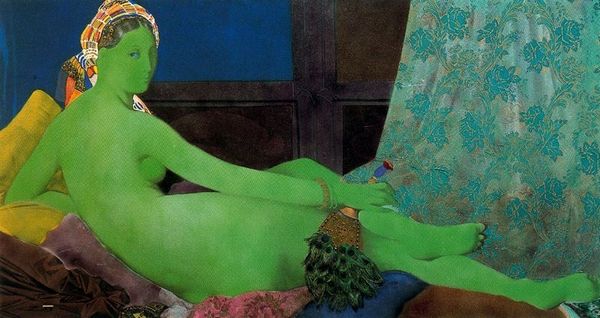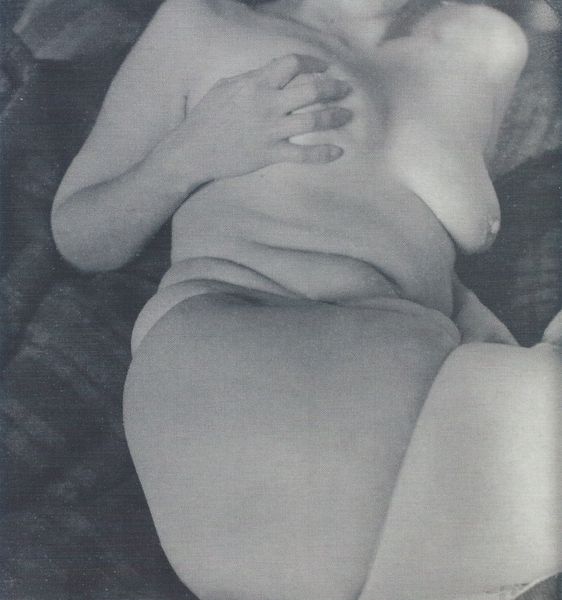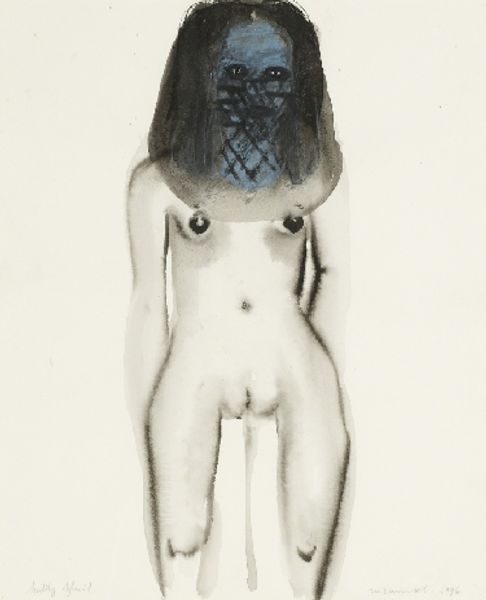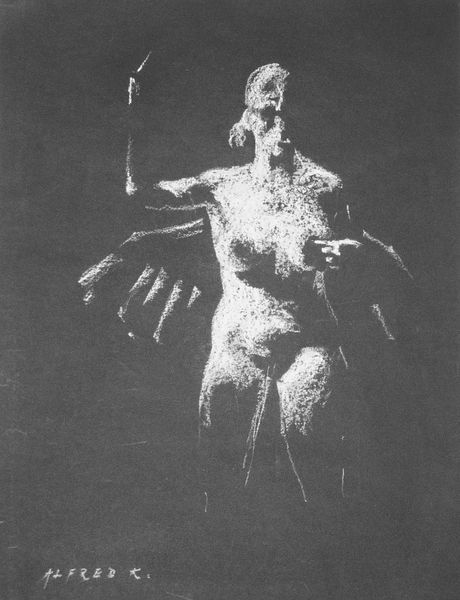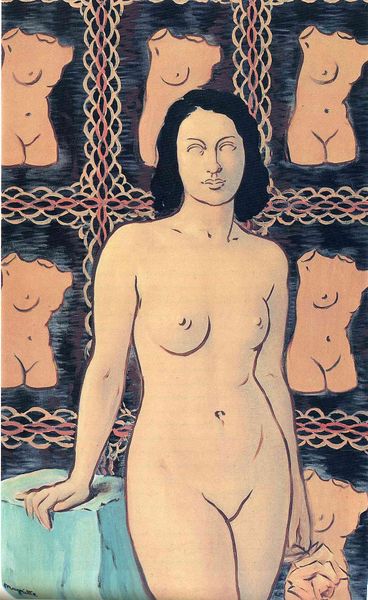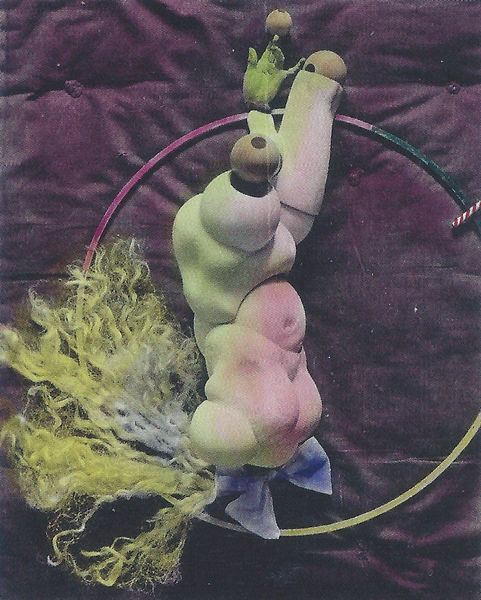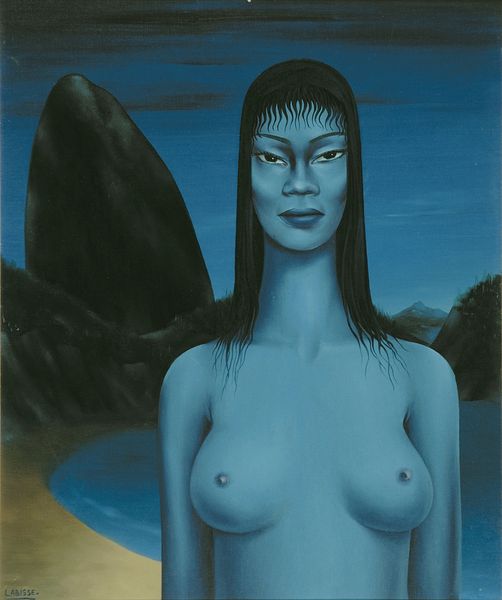
Copyright: Felix Labisse,Fair Use
Curator: Félix Labisse painted “La vanossa concubine du pap” in 1969. He rendered his figure with an almost surreal blue tint to her skin. Editor: Immediately striking is the dreamlike, otherworldly quality. The color palette, dominated by that cool blue skin tone, alongside the stark black hair, creates a surreal and slightly unsettling atmosphere. Curator: Labisse was associated with Surrealism. He certainly incorporated the erotic, but I wonder if you see something akin to a rejection of the commodification of sexuality present in some Surrealist works? Editor: I find it impossible to ignore the layered politics embedded in the visual choices. She is titled 'concubine', explicitly locating her in the frame of male desire and ownership. The blue skin – is it an intentional commentary on race, exoticism, objectification, or simply an artistic choice? Curator: The titles Labisse gave his works are themselves another part of his overall vision; they frequently are not what you might anticipate and contribute to his exploration of ambiguity and shifting identities. There are art historical references, as well, perhaps some sly commentary? Note those classical columns behind her. Editor: Those classical elements offer a jarring juxtaposition. The idealized, almost sterile background contrasts with the eroticism and potential vulnerability of her figure. The artist might have wanted to invite us to reflect on our cultural constructions of beauty and desirability. Does placing her amidst classical ideals serve to legitimize or perhaps subvert historical tropes surrounding femininity? Curator: His intent remains tantalizingly opaque. That is what keeps us returning. It might very well be he's challenging power dynamics implicit in artistic representation itself. She embodies a kind of defiance through sheer presence. Editor: Her gaze is definitely knowing, even challenging. I would say, regardless of authorial intention, this figure is imbued with a contemporary relevance that allows us to consider the enduring nature of the dynamics of objectification, representation, and power. Curator: Well said. It prompts important discussion around representation in art history and in the current visual landscape. Editor: It certainly does, forcing me to revisit preconceptions regarding sensuality and subjectivity.
Comments
No comments
Be the first to comment and join the conversation on the ultimate creative platform.
